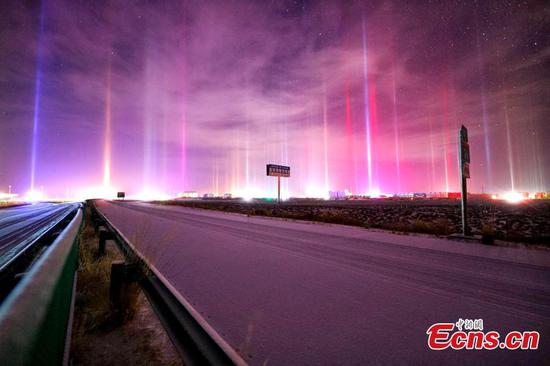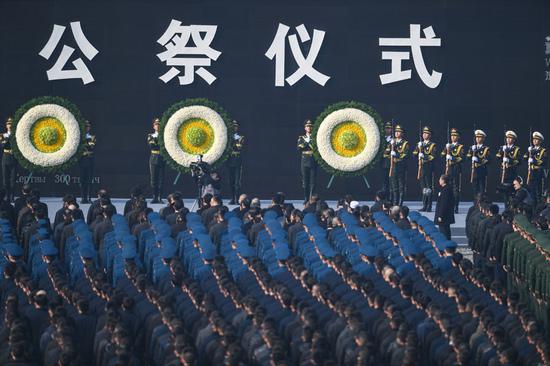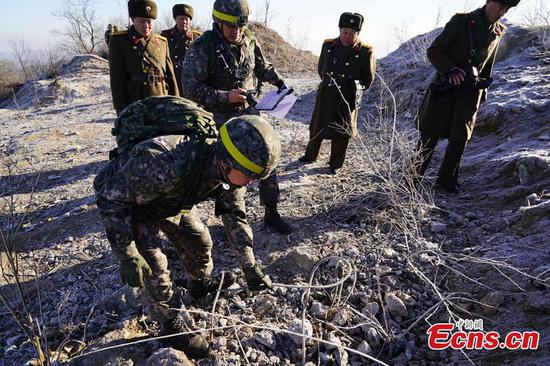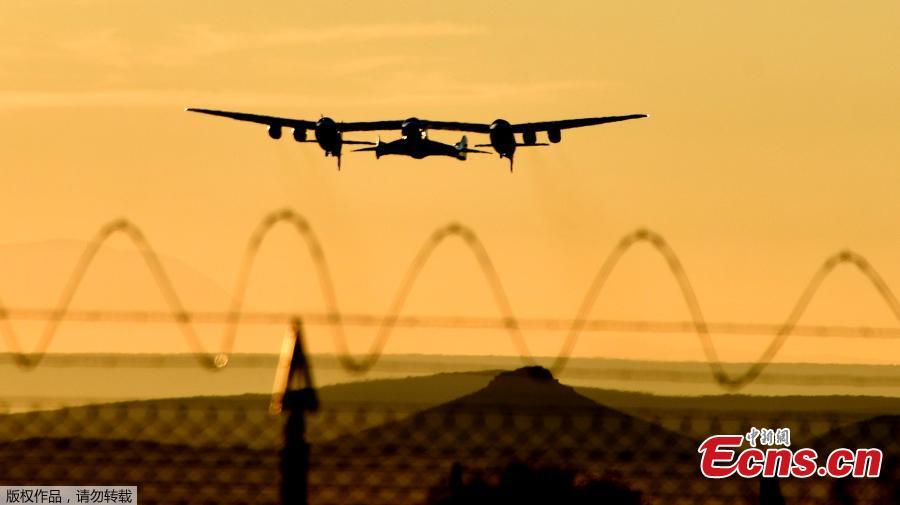
Virgin Galactic's SpaceshipTwo takes off for a suborbital test flight on December 13, 2018, in Mojave, California. Virgin Galactic marked a major milestone on Thursday as its spaceship made it to a peak height, or apogee, of 51.4 miles (82.7 kilometers), after taking off attached to an airplane from Mojave, California, then firing its rocket motors to reach new heights. (Photo/Agencies)
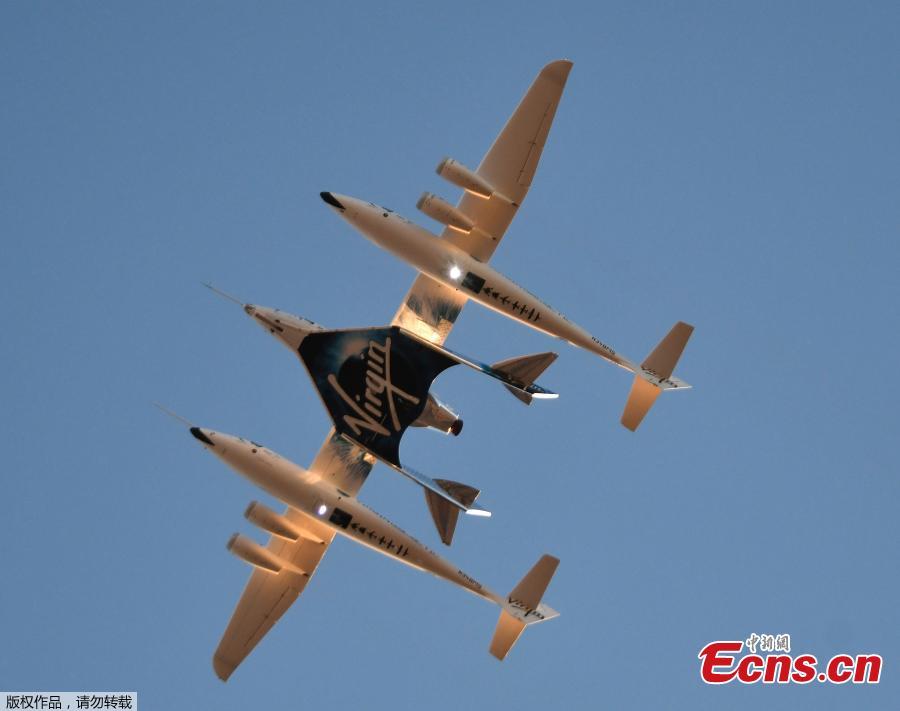
Virgin Galactic's SpaceshipTwo takes off for a suborbital test flight of the VSS Unity on December 13, 2018, in Mojave, California. Virgin Galactic marked a major milestone on Thursday as Unity made it to a peak height, or apogee, of 51.4 miles (82.7 kilometers), after taking off attached to an airplane from Mojave, California, then firing its rocket motors to reach new heights. (Photo/Agencies)

Virgin Galactic's SpaceshipTwo takes off for a suborbital test flight of the VSS Unity on December 13, 2018, in Mojave, California. - Virgin Galactic marked a major milestone on Thursday as Unity made it to a peak height, or apogee, of 51.4 miles (82.7 kilometers), after taking off attached to an airplane from Mojave, California, then firing its rocket motors to reach new heights. (Photo/Agencies)
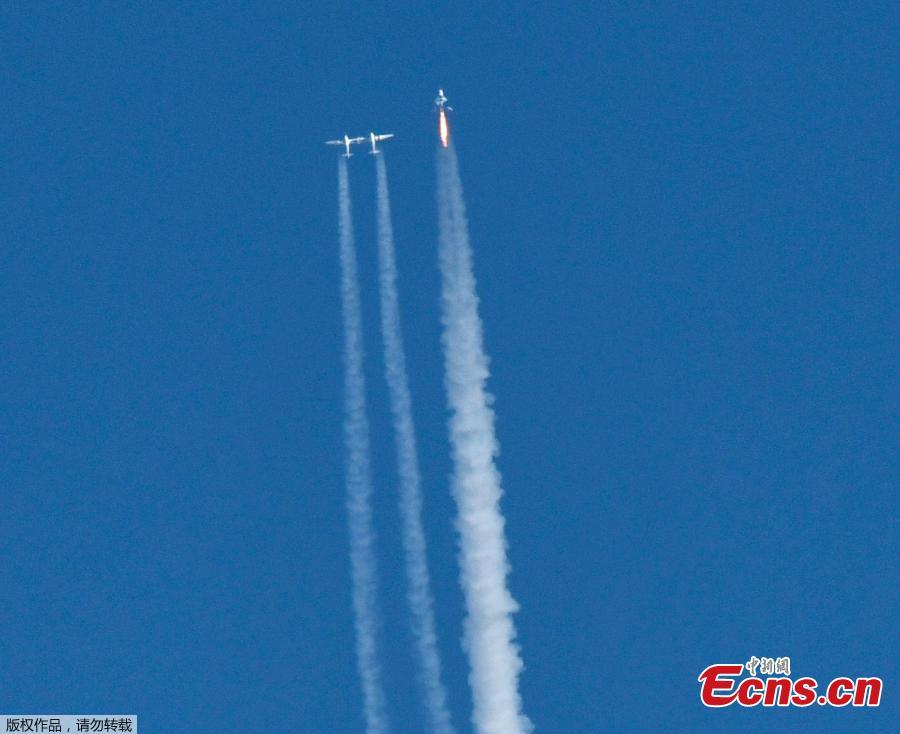
Virgin Galactic's VSS Unity launches for a suborbital test flight on December 13, 2018, in Mojave, California. Virgin Galactic marked a major milestone on Thursday as its spaceship made it to a peak height, or apogee, of 51.4 miles (82.7 kilometers), after taking off attached to an airplane from Mojave, California, then firing its rocket motors to reach new heights.(Photo/Agencies)
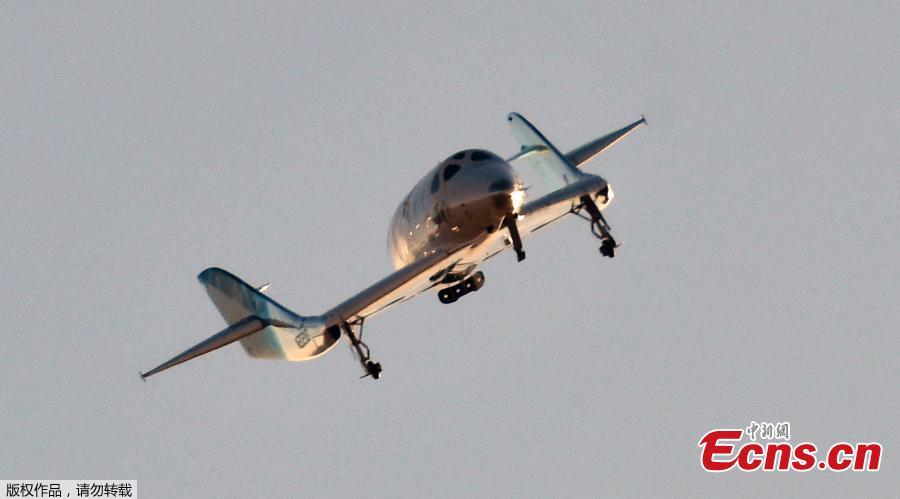
Virgin Galactic's VSS Unity comes in for a landing after its suborbital test flight on December 13, 2018, in Mojave, California. Virgin Galactic marked a major milestone on Thursday as its spaceship made it to a peak height, or apogee, of 51.4 miles (82.7 kilometers), after taking off attached to an airplane from Mojave, California, then firing its rocket motors to reach new heights. (Photo/Agencies)










